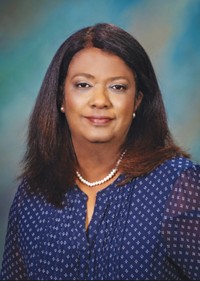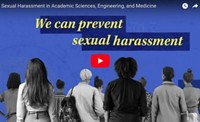Advertisement
Grab your lab coat. Let's get started
Welcome!
Welcome!
Create an account below to get 6 C&EN articles per month, receive newsletters and more - all free.
It seems this is your first time logging in online. Please enter the following information to continue.
As an ACS member you automatically get access to this site. All we need is few more details to create your reading experience.
Not you? Sign in with a different account.
Not you? Sign in with a different account.
ERROR 1
ERROR 1
ERROR 2
ERROR 2
ERROR 2
ERROR 2
ERROR 2
Password and Confirm password must match.
If you have an ACS member number, please enter it here so we can link this account to your membership. (optional)
ERROR 2
ACS values your privacy. By submitting your information, you are gaining access to C&EN and subscribing to our weekly newsletter. We use the information you provide to make your reading experience better, and we will never sell your data to third party members.
Careers
Exploring The 'Double Bind'
Symposium explores contributions of race, ethnicity, and gender to science’s demographics
by Linda Wang and Linda R. Raber
November 16, 2009
| A version of this story appeared in
Volume 87, Issue 46

Despite three decades of academic, industrial, and governmental efforts aimed at attracting and retaining African American, Native American, and Hispanic women in science, technology, engineering, and mathematics (STEM), they remain underrepresented relative to their populations in receiving Ph.D. degrees and advancing to senior positions in their careers. And Asian women, while not underrepresented in STEM education and employment, are not often found in leadership positions in STEM fields.
The plight of these women of color in STEM fields was the focus of a symposium held late last month in Arlington, VA. The symposium offered some insight into the unique obstacles these women face and the support they find along the way.
TERC, a Cambridge, Mass., STEM education research and development organization, organized the event, which was funded by the National Science Foundation, the American Chemical Society, and Phoebe Leboy on behalf of the Association for Women in Science. According to TERC, the aim of the symposium was to begin to formulate a “research and policy agenda promoting women of color in STEM fields.”
Specifically, organizers will develop a report based on the symposium and present it to the NSF Committee on Equal Opportunities in Science & Engineering. This congressionally mandated committee was formed in 1980 and advises NSF on policies and activities related to the participation of people from underrepresented groups in science and engineering. The committee currently has 10 members and includes ACS President-Elect Joseph S. Francisco of Purdue University, who participated in the symposium.
Perhaps the earliest observations of the challenges faced by women of color in science came in a 1976 American Association for the Advancement of Science report, “The Double Bind: The Price of Being a Minority Woman in Science,” which found that female scientists of color struggled much more to achieve advancement in their education and careers than did white women or men of any race or ethnicity. Maria (Mia) Ong, an organizer of the symposium and principal investigator and director of the Diversity Resource Group at TERC, believes that little action has been taken to correct this situation since “The Double Bind” was published.
Women of color face obstacles “at a very specific intersection of race and gender,” noted conference participant Gloria Thomas MaGee, an assistant professor of chemistry at Xavier University of Louisiana. She asserts that the concerns of women from underrepresented groups are distinct from either women’s issues or minority issues by themselves.
At the start of the symposium, Ong presented some of the data to be published from an analysis and synthesis of the past 38 years of empirical research literature on women of color in STEM. She reported that “women of color identify social barriers, more than lack of academic ability or interest, as the main disincentive to continuing in STEM education.”
Among these barriers, Ong and other speakers said, is the perception by professors that underrepresented women are not serious students. Another is the difficult transition from the supportive environments of historically black colleges and universities and community colleges to traditional STEM programs in predominantly white institutions. Women of color also face challenges in finding mentors and infiltrating peer groups, which can lead to social isolation.
Other speakers provided data from their own research. Donna J. Nelson, an associate professor of chemistry at the University of Oklahoma who studies trends in hiring of women and minorities, presented her data on science and engineering faculty (chem.ou.edu/~djn/diversity/top50.html).
In 2001, Nelson found only one African American woman, one Native American woman, and five Hispanic women among the chemistry faculty at the NSF top 50 chemistry departments in the U.S., based on chemical research funding expenditures. In 2007, four African American women and nine Hispanic women held positions in the top 50 departments. No Native American women were in this group.
A key component of the symposium involved participants sharing their personal experiences. For example, conference speaker Sandra Begay-Campbell, a principal member of the technical staff at Sandia National Laboratories, described the isolation she felt as a Native American pursuing an undergraduate degree in civil engineering. But she persevered and eventually earned a master’s degree in structural engineering from Stanford University.
“I learned to interrupt. I learned to be very aggressive. I learned to take a stand when necessary,” she said. She has used those lessons to help motivate other Native Americans in realizing their potential in STEM fields by, among other things, serving as president of the American Indian Sciences & Engineering Society.
ACS is exploring ways to contribute to the effort, with President-Elect Francisco making it one of the key focal points of his presidency next year. “It is my hope that the needs and issues of women of color are no longer invisible,” he said during an ACS-sponsored reception for symposium attendees. “As part of the society’s demonstrated commitment, we have a cadre of members participating in the event to bring back recommendations to ACS on how we, as a professional society, can ensure that women of color in the chemical enterprise are no longer a forgotten minority.”
Francisco, who is African American, has more than an academic interest in this subject. “I have three daughters, and they love science and mathematics,” he said. “The reason I’m passionate about this is because I want to understand the issues and challenges that they’re going to face and to learn how, as a father, I can help them succeed.”
For the chemical industry, supporting women of color makes perfect sense. “The foundation for our competitiveness is having the most talented scientists and engineers working for our company,” said symposium attendee Susan B. Butts, senior director of external science and technology programs at Dow Chemical.
“Women of color in STEM are a largely untapped source of talent in science and engineering,” Butts said. But it’s about more than just hiring people, she explained. “It’s helping them to contribute at their maximum level when they’re in the workplace.”
TERC will now compile the suggestions and comments it received during the symposium and submit a report to the NSF Committee on Equal Opportunities in Science & Engineering, which will then submit any recommended actions it deems necessary to NSF and Congress. “What we hope to do is to influence NSF and Congress to think about these issues and to create practices, legislation, and policies around promotion of this group,” Ong said.
But perhaps the greatest influence will come from the individual scientists. Thomas MaGee summed it up: “The more we can see outside of our own experiences, the better we’ll be able to make STEM welcoming for everyone.”




Join the conversation
Contact the reporter
Submit a Letter to the Editor for publication
Engage with us on Twitter